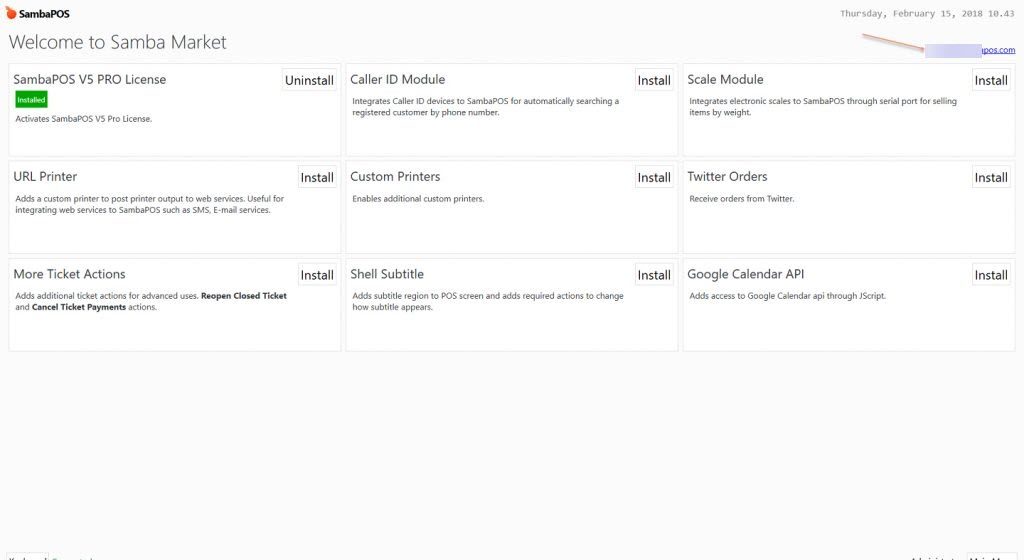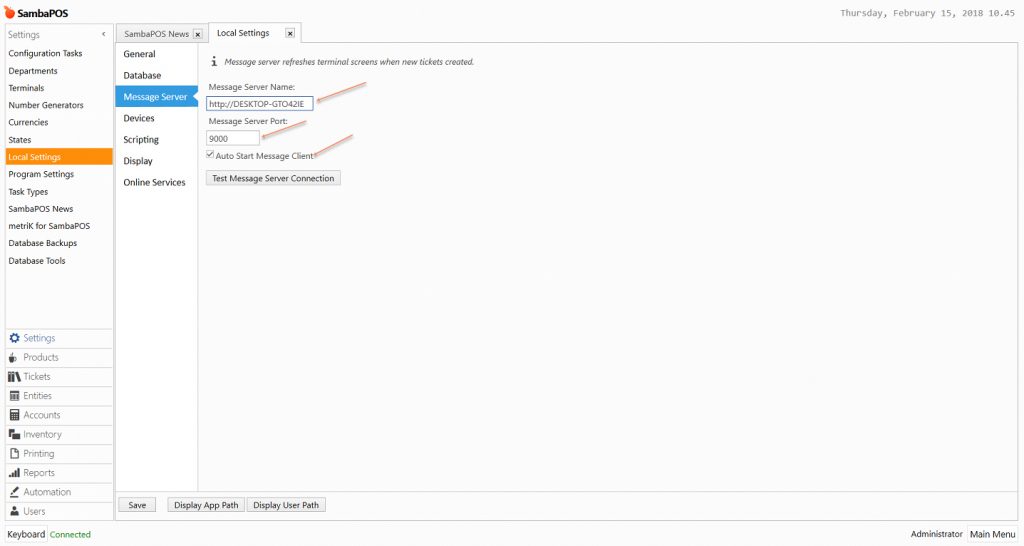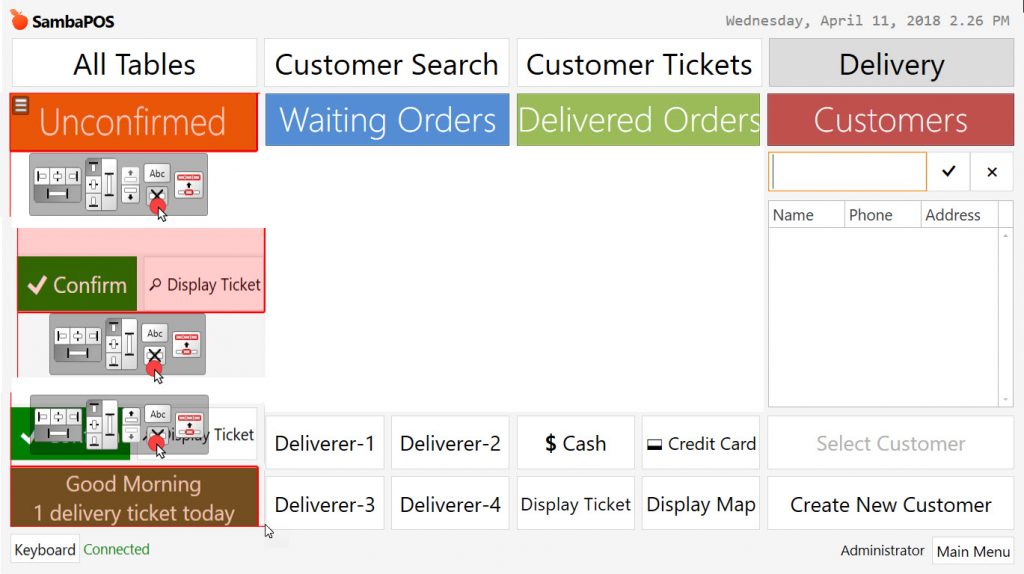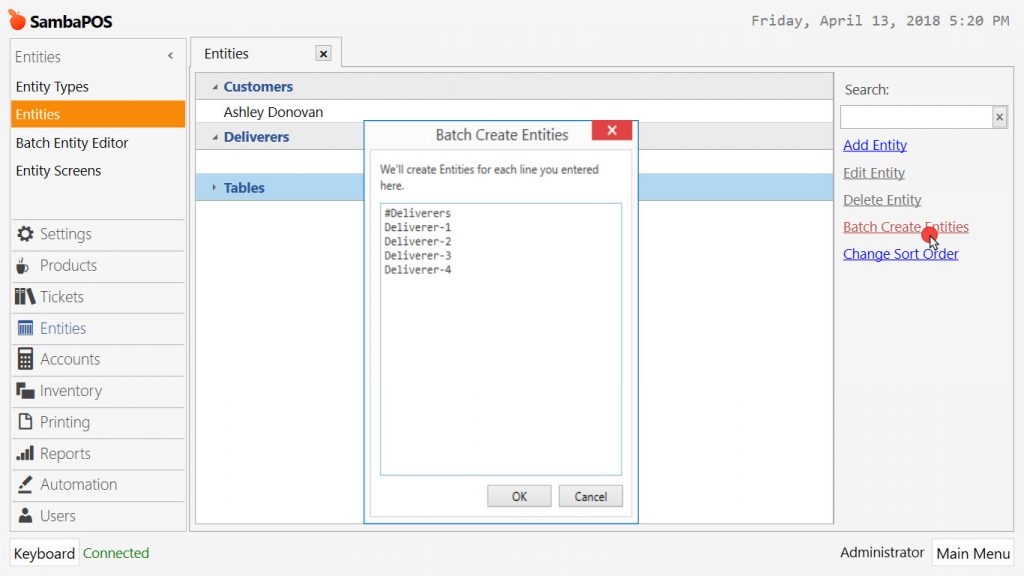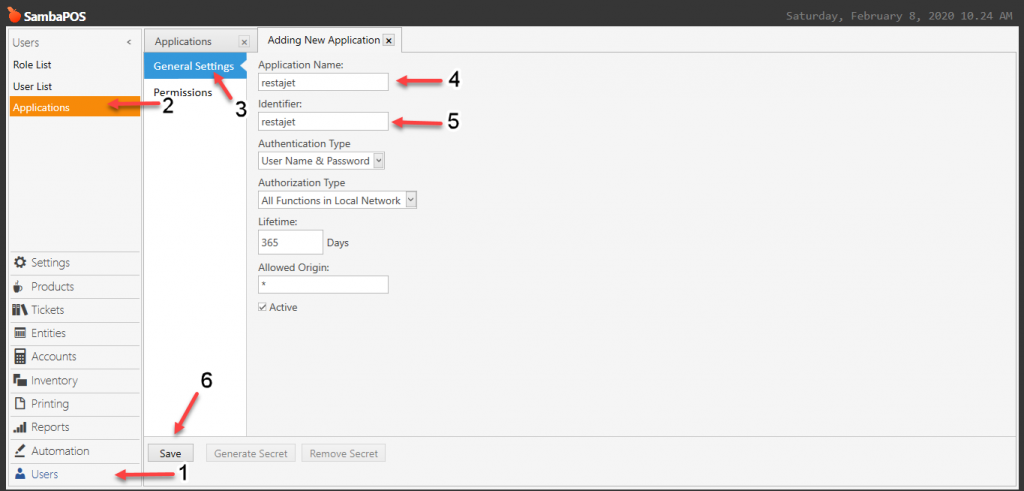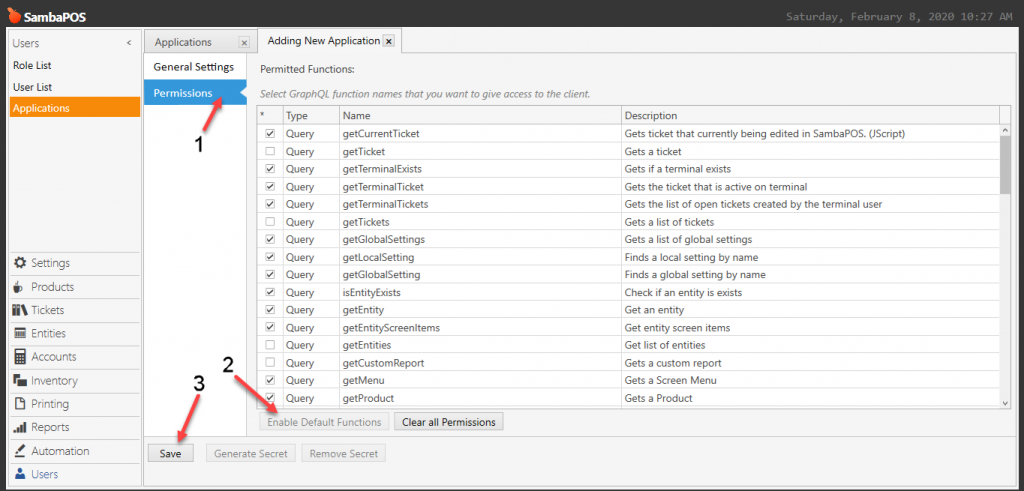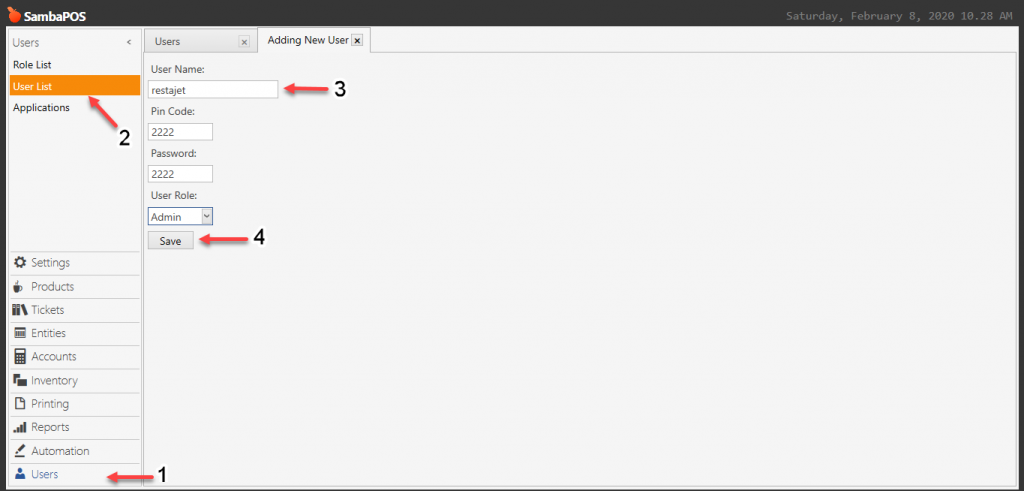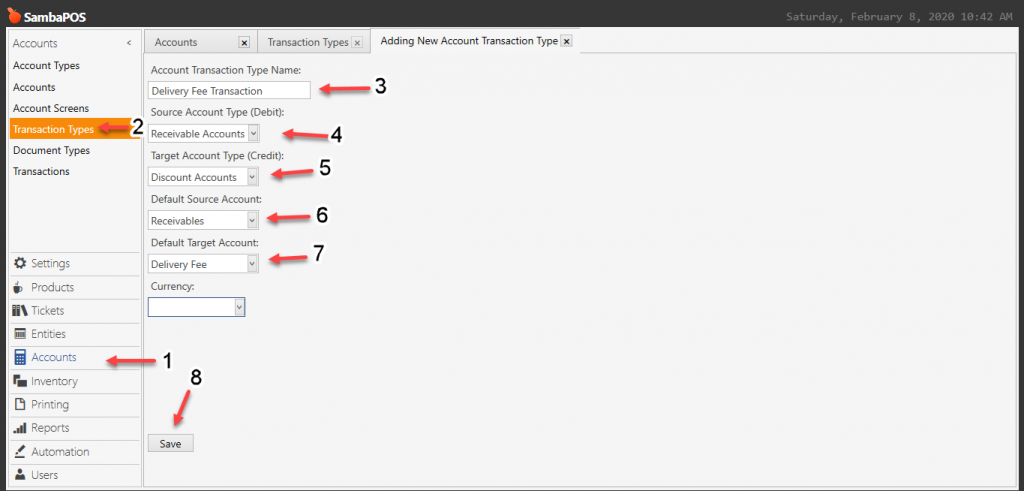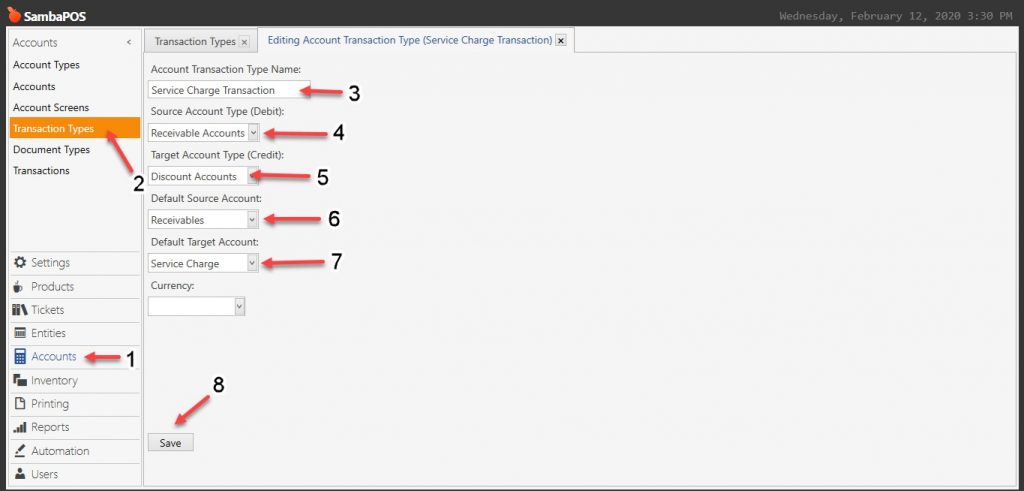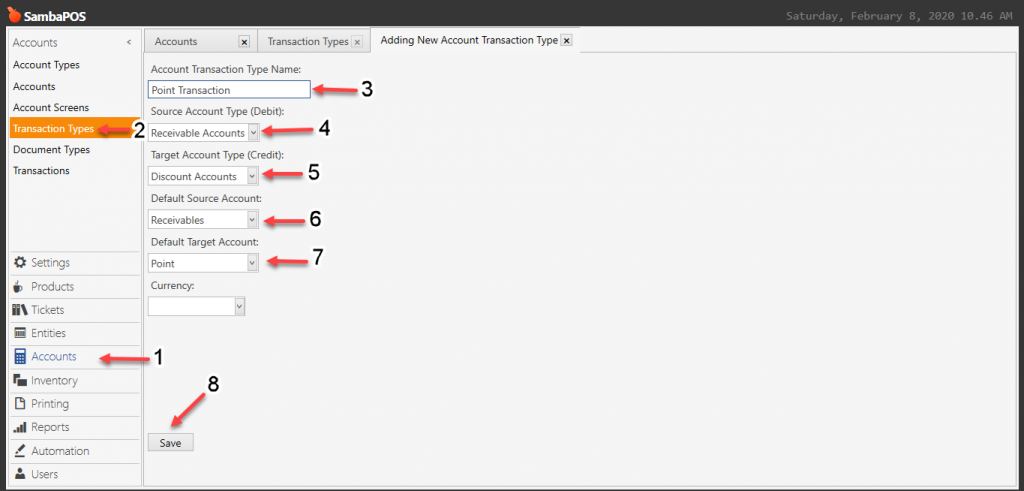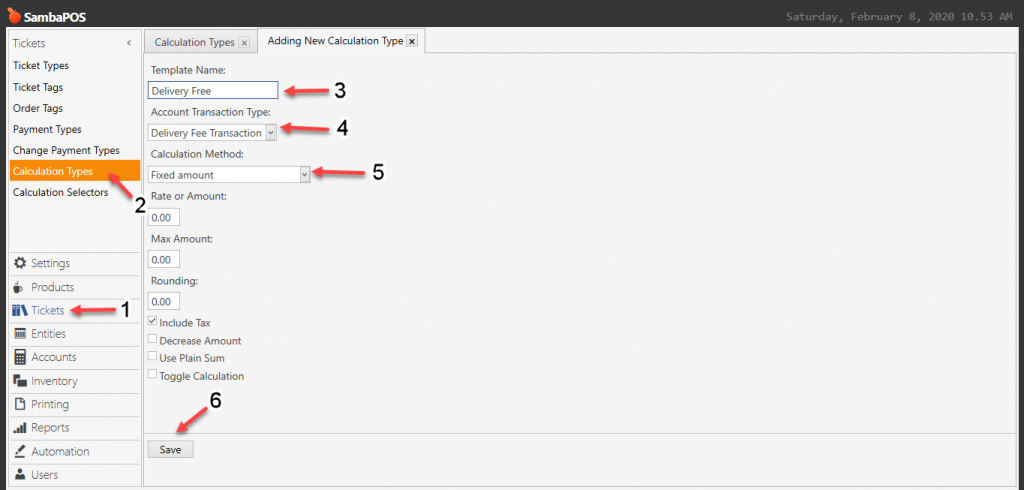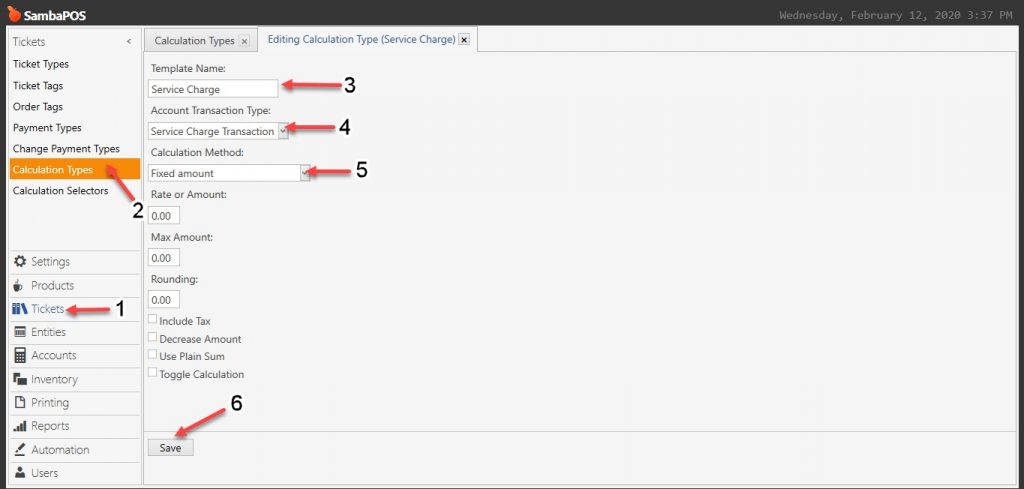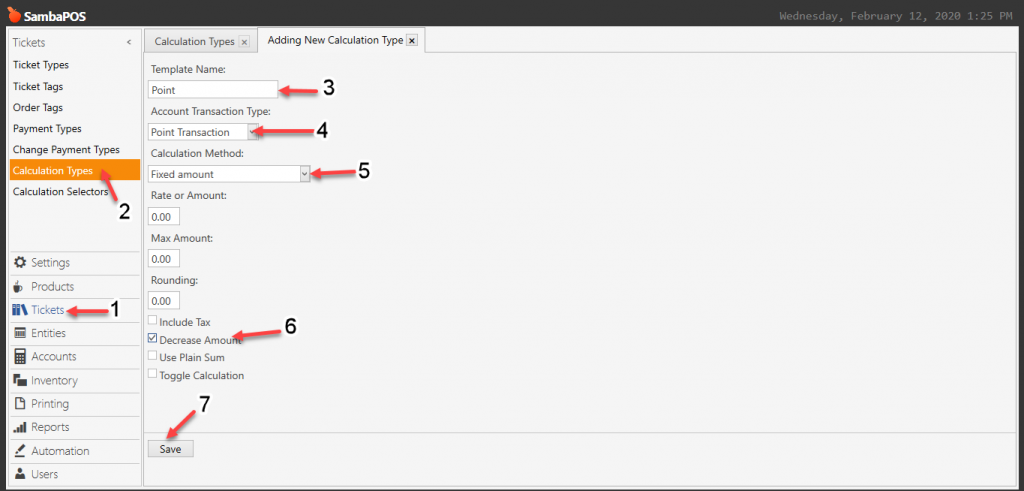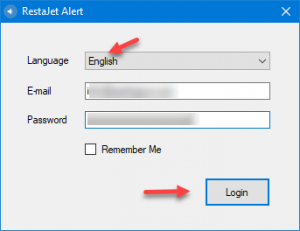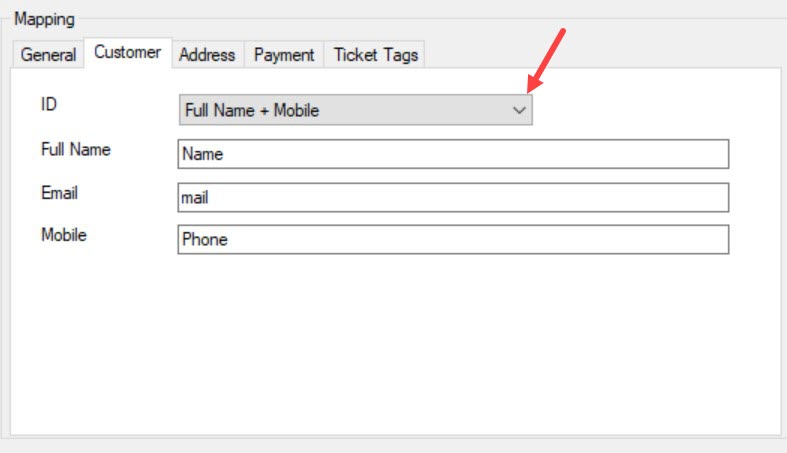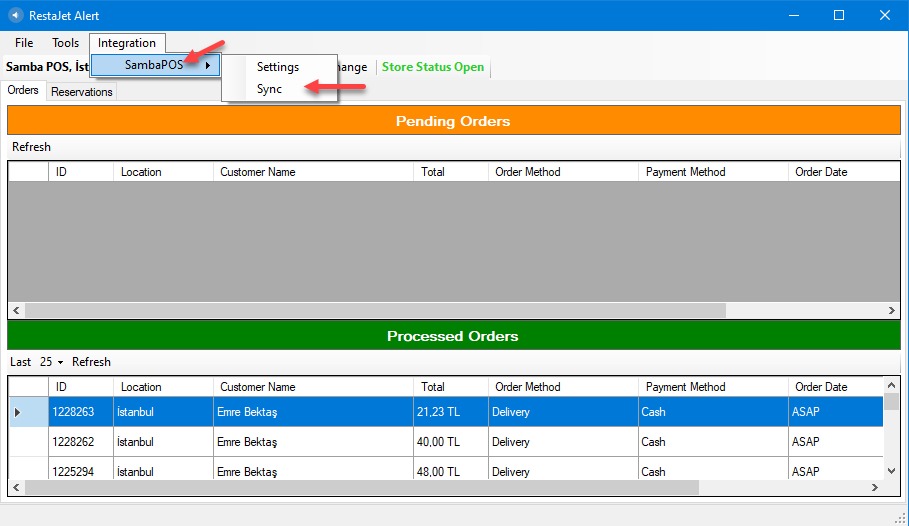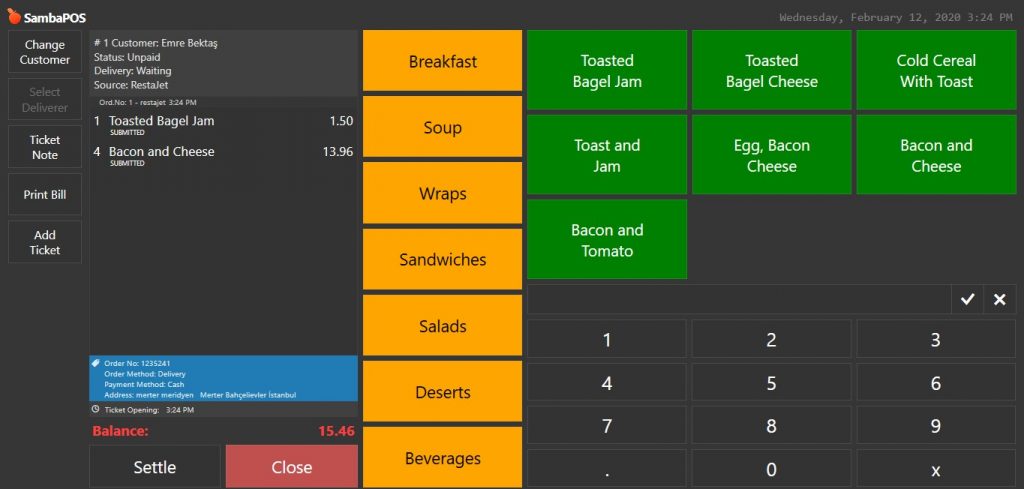6.4. How to Setup RestaJet Integration Module?
In this document it will be explained how to setup RestaJet Integration on SambaPOS V5 Pro.
1. Before Installation
1.1. Hardware, Operating System and SambaPOS Requirements
- Windows 10 or above Windows Operating System,
- Latest version of Microsoft MSSQL Server version,
- SambaPOS 5.2.26 or above version. Should be started with these configurations.
1.2. About RestaJet Module License
If you don’t have SambaPOS – RestaJet Integration License, you have to purchase a license by using SambaPOS CP website.
To Download RestaJet application click here.
Important Note:
Your RestaJet Integration Module License and SambaPOS V5 Pro license have to be defined under the same e-mail address on our CP website.
2. SambaPOS Settings
2.1. SambaPOS License Activation Check
Check the SambaPOS Main License status.
2.2. Message Server Settings
2.2.1. SambaPOS Message Server Controls and Settings
Online Order Module uses SambaPOS Message Server for communication. You might be using SambaPOS Message Server with default settings. If you don’t use Message Server or if using it with different settings than default in this case you have to configure necessary settings by following below explanations.
To configure Message Server Settings, execute “Samba.MessagingServerServiceTool.exe” file which is located in the directory that SambaPOS is installed.
Port: 9000+
Note: Port has to be 9000+ By checking image below you can see how it is supposed to be simply configured and also notice that it has to be on Start status.
2.2.2. SambaPOS Manage Message Server Settings
Message Server settings are supposed to be configured also in SambaPOS by following the settings above. Go to Manage > Settings > Local Settings > Message Server, in here perform the mentioned settings and click on SAVE button.
Message Server Name: http://computer_name (Name of SambaPOS V5 installed computer)
or http://123.123.123.123 (IP address of SambaPOS V5 installed computer)
Message Server Port: 9000
Auto Start Message Client: [X] (Has to be selected)
2.3. SambaPOS Advanced Delivery Service Setup
After completing pre settings, it is necessary to prepare the screens which will be used in SambaPOS and the needed procedures automatically by installing Configuration Task.
Go to Manage > Settings > Configuration Tasks from here click on Advanced Delivery Screen Setup link and perform the installation. This installation automatically creates all the necessary SambaPOS definitions and the screens.
In here there are some unnecessary parts, (Unconfirmed Label Widget Window) so that you need to remove them from entity screen. Open the design menu by right clicking of mouse and remove those 3 parts one by one.
Once you finished configurations close design menu by right clicking mouse so that changes will be saved.
Note 1: After completing necessary editings, go to Manage> Entities > Entities from this menu, add as many as needed Delivery Service Staff.
2.4. SambaPOS Creating Deliverer Entities
If you already have Deliverers as Entities, the import file which mentioned above will add those deliverers automatically into Online Order Entity Screen. If you don’t have, you need to create them according to steps below;
Go to Manage > Entities > Entities > from here click on Batch Create Entities link, in the window put # symbol and create your Deliverers. After completing necessary editings, click on Ok button.
2.5. SambaPOS Adding Application
Main Menu > Manage > Users > Applications > Here, click on Add Application.
General Settings Section;
Application Name: restajet
Identifier: restajet
Authentication Type: User Name & Password
Authorization Type: All Functions in Local Network
Lifetime: 365
Allowed Origin: *
Permissions Section;
Enable Default Functions: Click on this button.
After completing necessary editings, click on Save button.
2.6. SambaPOS Creating User
Main Menu > Manage > Users > User List > Here, click on Add User.
User Name: restajet
Pin Code: 2222 (You can select any desired pin code)
Password: 2222 (Type the pin which you used in previous step)
User Role: Admin
After completing necessary editings, click on Save button.
2.7. Adding Necessary Accounts on SambaPOS
Main Menu > Manage > Accounts > Accounts > Batch Create Accounts > Here, type below mentioned accounts into window according to image;
#Discount Accounts
Delivery Fee
Service Charge
Point
2.8. Adding Transaction Type on SambaPOS
2.8.1. Adding Delivery Fee Transaction
Go to Main Menu > Manage > Accounts > Transaction Types > here click on Add Transaction Type.
Account Transaction Type Name: Delivery Fee Transaction
Source Account Type (Debit): Receivable Accounts
Target Account Type (Credit): Discount Accounts
Default Source Account: Receivables
Default Target Account: Delivery Fee
After completing necessary editings, click on Save button.
2.8.2. Adding Service Charge Transaction
Go to Main Menu > Manage > Accounts > Transaction Types > here click on Add Transaction Type.
Account Transaction Type Name: Service Charge Transaction
Source Account Type (Debit): Receivable Accounts
Target Account Type (Credit): Discount Accounts
Default Source Account: Receivables
Default Target Account: Service Charge
After completing necessary editings, click on Save button.
2.8.3. Adding Point Transaction
Go to Main Menu > Manage > Accounts > Transaction Types > here click on Add Transaction Type.
Account Transaction Type Name: Point Transaction
Source Account Type (Debit): Receivable Accounts
Target Account Type (Credit): Discount Accounts
Default Source Account: Receivables
Default Target Account: Point
After completing necessary editings, click on Save button.
2.9. Adding Calculation Type on SambaPOS
2.9.1. Adding Delivery Fee Calculation Type
Go to Main Menu > Manage > Tickets > Calculation Types > here, click on Add Calculation Type.
Template Name: Delivery Fee
Account Transaction Type: Delivery Fee Transaction
Calculation Method: Fixed Amount
Rate or Amount: 0.00
Max Amount: 0.00
Rounding: 0.00
After completing necessary editings, click on Save button.
2.9.2. Adding Service Charge Calculation Type
Go to Main Menu > Manage > Tickets > Calculation Types > here, click on Add Calculation Type.
Template Name: Service Charge
Account Transaction Type: Service Charge Transaction
Calculation Method: Fixed Amount
Rate or Amount: 0.00
Max Amount: 0.00
Rounding: 0.00
After completing necessary editings, click on Save button.
2.9.3. Adding Point Calculation Type
Go to Main Menu > Manage > Tickets > Calculation Types > here, click on Add Calculation Type.
Template Name: Point
Account Transaction Type: Point Transaction
Calculation Method: Fixed Amount
Rate or Amount: 0.00
Max Amount: 0.00
Rounding: 0.00
After completing necessary editings, click on Save button.
3. RestaJet Integration Settings
You can download RestaJet Integration setup file from here.
Login to RestaJet program by using the login info which provided by RestaJet.
3.1. RestaJet Settings
Click on Integration > SambaPOS > Settings.
Host (Message Server): SambaPOS Message Server Address
Application Identifier: Application name which was created on SambaPOS
User Name: User name which was created on SambaPOS
Password: Password which is used on SambaPOS
Terminal: Default Terminal name on SambaPOS
Menu Name: The menu name on SambaPOS
Customers Entity: Entity Type name on SambaPOS (Customers)
Tables Entity: Entity Type name on SambaPOS (Tables)
Delivery Ticket Type: Ticket Type name that is used for Delivery Service (Delivery Service)
Delivery Department: Department name which Delivery Service Screen is used for (Restaurant)
Pickup Ticket Type: Ticket Type which is used for Pick Up (Ticket)
Pickup Department: Department name which Pick Up is used on (Restaurant)
Table Order Ticket Type: Ticket Type which is used for Table Orders (Ticket)
Table Order Department: Department name which is used for Table Orders (Restaurant)
Eat In Ticket Ticket Type: Ticket Type which is used for Eat In Orders (Ticket)
Eat In Department: Department name which is used for Eat In Orders (Restaurant)
Reward Point Name: This part is explained on 2.9.3 step of document (Point)
Discount Name: This Calculation Template comes as default. (Discount)
Delivery Fee Name: This part is explained on 2.9.1 step of document (Delivery Fee)
Service Charge Name: This part is explained on 2.9.2 step of document. (Service Charge)
In Customer Section, you can configure Customer Entity Type Custom Field from drop down menu;
Full Name
Full Name + Mobile
Mobile
If you have payment types as shown in the below picture write them, if not then you can continue.
You need to fill the Ticket Tags field according to your settings for order time/date, payment type and other information
Order Date: Ticket Tag name that is used while registering the order into SambaPOS. (Order Date)
Order Time: Ticket Tag name that is used while registering the order into SambaPOS. (Order Time)
Order No: Ticket Tag name that is used while registering the order into SambaPOS. (Order No)
Order Method: Ticket Tag name that is used while registering the order into SambaPOS. (Order Method)
Payment Method: Ticket Tag name that is used while registering the order into SambaPOS. (Payment Method)
Address: Ticket Tag name that is used while registering the order into SambaPOS. (Address)
After completing necessary editings, click on Save button.
3.2. Selecting SambaPOS as POS Integration on RestaJet Application
On the RestaJet application first click on File then Settings button;
In this screen, from POS Integration section select SambaPOS and click on Ok button.
3.3. Sending SambaPOS Menu to RestaJet
Click on Integration > SambaPOS > Sync
Update Restaurant Menu: Sends your SambaPOS menu to RestaJet page.
Update Restaurant Tables: In case using Reservation Module on RestaJet Integration, sends all SambaPOS tables to RestaJet.
When you receive an order via RestaJet, you will be seeing an image below;

